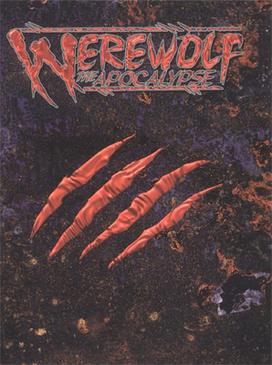Recently, I popped this movie in the DVD player and gave it a viewing for the first time in a year or two (I've probably watched it over a dozen times, however). My objectivity surrounding
The 13th Warrior, I'll admit, is somewhat shaky. Okay...it's pretty much non-existent. A few of you out there who know me were there, that fateful summer day in August of '99, when we went to see this at the Cheri theater downtown as a matinee. At the time, the main hall of the Cheri was probably one of the biggest, if not
the biggest, screen in Boston proper, and so this movie was definitely given a real "cinematic" presentation. I'll always maintain that certain movies need to be seen on the big screen, in the theater, and even today's mega-televisions and home theater sound systems don't compare to what a real movie theater can provide. Perfect evidence of this was when I saw
Conan the Barbarian in the theater for the first time about six years ago, and my already favorite fantasy movie suddenly became one of my greatest cinematic experiences, period.
But I digress.
The 13th Warrior is adapted from the Michael Crichton novel,
Eaters of the Dead, which was in turn his attempt at writing a "historical" interpretation of Beowulf, using some fake "found documentation". Written in 1976, it was one of his earlier novels, written way before
Jurassic Park, when he was just another writer turning out cool books in various genres. The premise, in a sentence or two, is that the story follows an Arab diplomat as he gets caught up with a band of Viking badasses as they venture far into the hinterlands of Scandinavia to do battle with a horde of, to put it simply, cannibalistic Neanderthals. Crichton uses the cave-dwelling, fire-toting savages as the stand-in for Grendel, the Dragon, and Grendel's Mother.
Right there is the first problem - when you explain the plot of the film, it sounds a lot dumber than it is. there's a great deal of superstition and mystery surrounding the "Wendol" as they are known, and the Vikings all believe them to be actual supernatural creatures, a race of legendary were-bear creatures that are half man, half beast, lurking in the deep forests and appearing in the night with the mist, to raid and kill and make off with the heads of dead men, and most disturbingly, "
...it is said...they eat the dead...". Thus, the name of the book.
The movie also had a very difficult birth. John McTiernan started directing it, and then there were severe creative differences between him and Creighton, to the point where McTiernan left and Crichton finished directing the film (at this point Crichton had already directed a successful film, so this wasn't necessarily a dumb decision on the part of the studio). The movie does exhibit a kind of mixed personality disorder; it doesn't know if it should be horrifying and scary, or more straight action-adventure. The Vikings are also very..."Mythical" is how I like to put it. All the badasses wear armor and clothing that come from a wide range of cultures and time frames, many of them anachronistic. There were a LOT of people who tore the movie apart on this factor alone. I look at it as simply representing the Vikings as widely traveled adventurers, who've been to a lot of different, exotic locales.
In addition, there is the infamous "I listened!" language montage. If you're actually paying attention, it is pretty clear that Antonio Bandaras' character is spending
weeks traveling with the Vikings, and as an educated man who probably speaks a couple of languages already, he over time picks up bits and pieces of the Viking's language, until he surprises them by being able to speak their tongue pretty well. Many folks thought this process took a couple of days, perhaps as short as a single night, which isn't really supported by the montage unless you're not really paying attention. Ultimately, it is a gimmick to get around a language barrier that would've killed the story before it even began (not that some critics would be upset by that). Ultimately, I think it is fine; if the Stargate television series can get away with EVERYONE IN THE UNIVERSE speaking perfectly understandable English, then I think we're okay here.
Beyond these and some other criticisms of varying merit, I think this movie is flat out one of the best historical action-adventure movies of the last twenty years. The Viking Band is so perfectly cast, so well-populated with these tough, gritty, steely-eyed asskickers. The dialogue might be a little hammy, but it is so well-suited to the badassitude of the movie that it just plain works. A few quotes snagged from IMDB:
Herger the Joyous:
When they come, we form a circle in the center of the room, backs to one another.
Ahmed Ibn Fahdlan:
I am not a warrior.
Herger the Joyous:
Very soon, you will be.
Ahmed Ibn Fahdlan:
Have we anything resembling a plan?
Herger the Joyous:
Mm-hm. Ride till we find them... and kill them all.
Buliwyf:
I have only these hands. I will die a pauper.
King Hrothgar:
You will be buried as a king.
Buliwyf:
A man might be thought wealthy if someone were to draw the story of his deeds, that they may be remembered.
Ahmed Ibn Fahdlan:
Such a man might be thought wealthy indeed.
I also want to emphasize that, although this movie at some points isn't sure if it wants notes of horror or pure adventure, in many ways, it is still a good blend. The Wendol, until you get what they are later on, are a creepy, evil, almost goblin-esque race that hide in the shadows and "come in the mist". It isn't until about halfway through the movie that the characters can confirm that their opponents are simply men who dress and think of themselves as bears. The dark, misty, foreboding nature of the landscape, as well as the more disturbing scenes inside the caverns of the Wendol also contribute to the eerie quality of the movie, as does Jerry Goldsmith's incredible score. In fact, for years I used the soundtrack as tabletop role-playing game "mood music" because it just carried such a sense of adventure, mystery, suspense, and horror, all mixed together. Like another one of my favorites,
The Brotherhood of the Wolf, the "supernatural" elements lend a horror to the story that complements the action in my mind, rather than subtracting from it.
All in all, it is a shame this movie is considered such a disaster. It was extremely expensive to make, re-shoot, and market, and made back only a fraction of its costs ($60m in revenue vs. $160m in expenses). The financial failure of this film, I think, colors for many people the overall quality of the film, as many probably were introduced to it over the years already knowing it was a flop. On the other hand, there is a small, but quite strong, following for this film out there, mostly folks who understand it for what it is - an epic, mythic adventure story.
Novelist and movie critic Stephen Hunter reviewed the film when it came out, and his review from the Washington Post can still be found here. Hint: he opens with, "
Think of "The 13th Warrior" as Akira Kurosawa's "The Seven Samurai" jacked on amphetamines."


.jpg/revision/latest?cb=20150402023959)





















